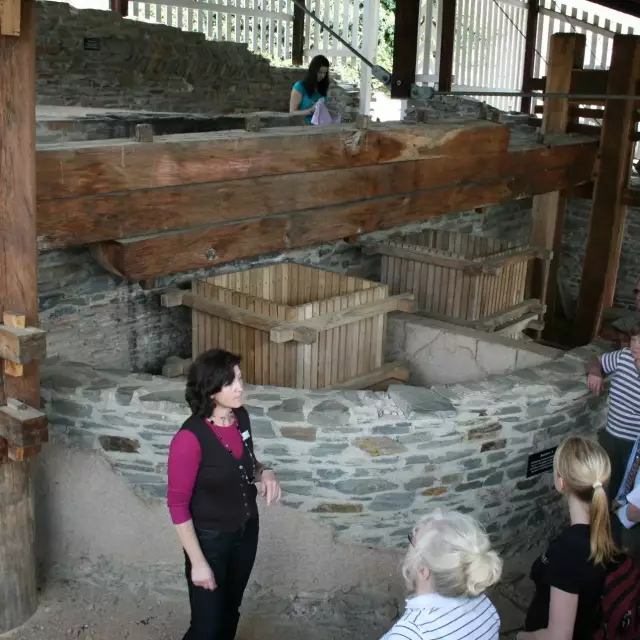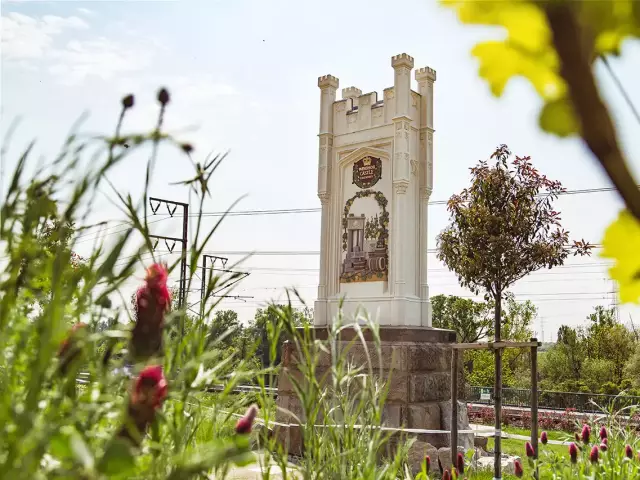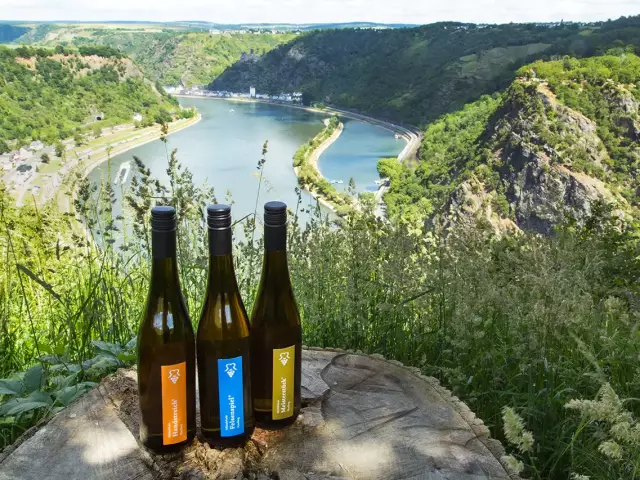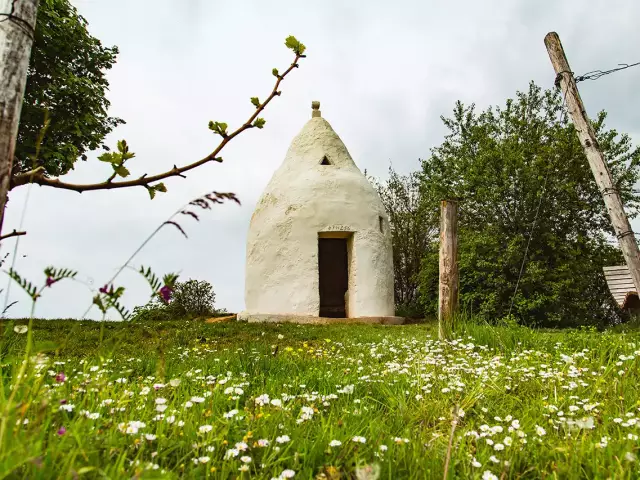Roman Wine Press at Piesport

Proof that the Romans once crushed grapes by foot can be found in an ancient wine press preserved in Piesport, near the Moselschleife (a major bow in the river). It is the biggest Roman wine press north of the Alps.
It was discovered in 1985 whilst clearing land at the foot of the famous steep slope site "Piesporter Goldtröpfchen."
The structure, measuring 44 metres in length and 20 metres wide, was built in the 4th century AD. It is estimated that up to 130 workers would process up to 60,000 liters of mash into 30-40,000 liters of wine each year. A screw press (including a suspended weight) was reconstructed to fit the historical press basket, so it is once again fully functional. The unusual size suggests that the Piesport wine press was once used for official purposes, such as in the service of the Prefecture of Trier or perhaps even the imperial court.
The facility proves how old the wine-growing tradition on the Mosel is. The Celts probably already cultivated wine here, but it was the Romans with their big wine estates who brought professional viticulture to the Mosel region. None other than Gaius Julius Caesar himself conquered the valley around 50 BC. Only decades later, Augusta Treverorum, the city of Trier, rose to become the center of Roman culture on the Mosel and later, even the capital of the Western Roman Empire. The Mosel Valley is therefore known as being the oldest wine growing region in all of Germany.
In 1992, a second wine press was found in Piesport, this one measuring 15 metres in length and five metres in width and containing four basins which were built in the 2nd century. Other antique wine press buildings were unearthed in Erden, Brauneberg und Maring-Noviand and saved for posterity. The building in Erden had seven rooms altogether and was rebuilt several times between the 3rd and the 7th century AD. Today the wine press building can be booked for events such as wine tastings or even cooking classes teaching antique Roman cuisine.
The wine press building in Piesport can be visited as well: it still shows the old mash basins, the fumarium and the smokehouse as well as the large wooden wine press. You can see it in action at the Roman Wine Pressing Festival each year in early October, when you will be transported back 1700 years to when slaves stomped the grapes with their bare feet. It's time for men, women and children to don their loincloths and tunics and bring this historical press house back to life.




